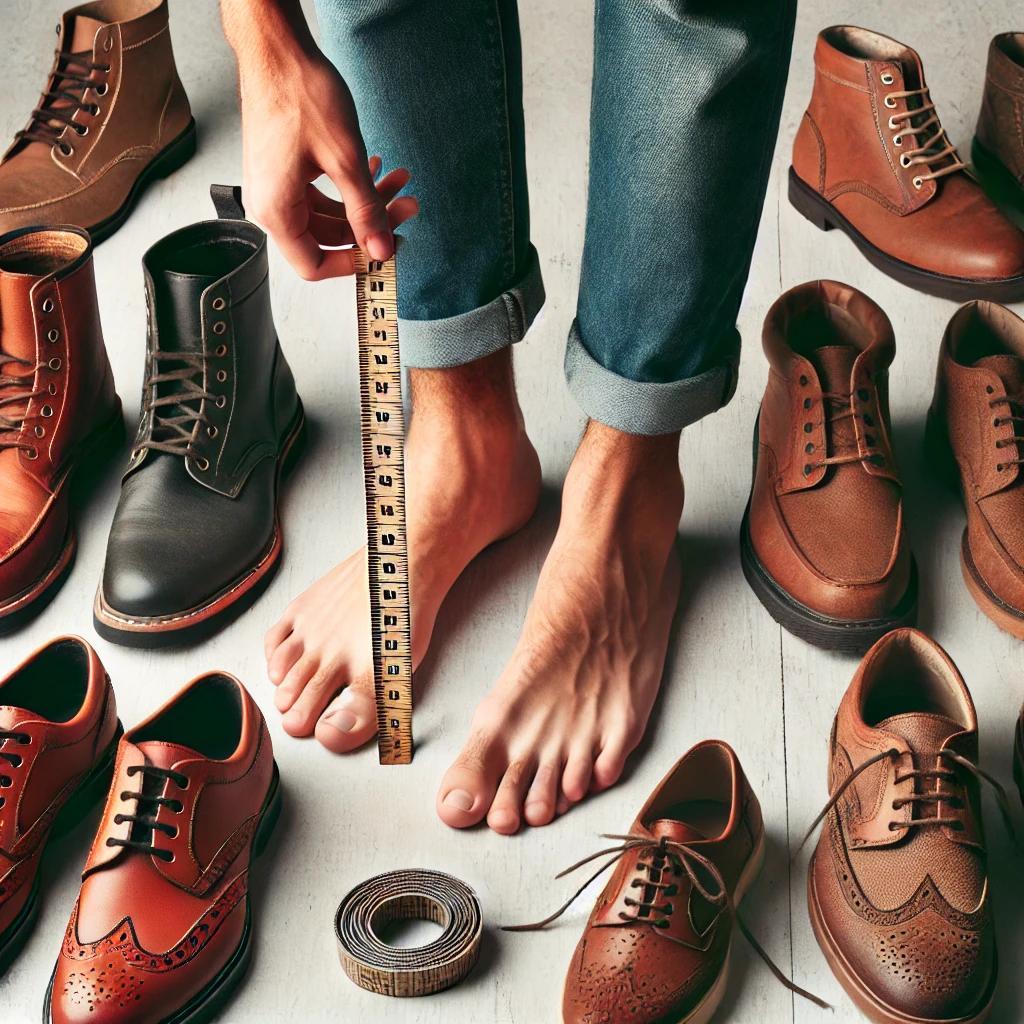
The Ultimate Foot Health and Shoe Fitting Guide
Share
Foot health is an essential part of overall wellness that is often overlooked. Your feet carry the weight of your body, support your posture, and enable your mobility. Wearing the wrong shoes can lead to discomfort, pain, and even long-term health issues. This comprehensive guide will help you understand the importance of foot health and how to find the perfect shoe fit, ensuring that your footwear not only looks great but also keeps your feet happy and healthy.
Understanding Foot Health
Why Foot Health Matters
Your feet are the foundation of your body. They support your entire weight and allow you to stand, walk, and run. Foot health is crucial because problems with your feet can lead to discomfort in other parts of your body, such as your knees, hips, and lower back. Common foot issues like bunions, plantar fasciitis, and hammertoes can be exacerbated by ill-fitting shoes, making it essential to choose footwear that supports your foot structure and allows for natural movement.
Common Foot Problems and Their Causes
- Plantar Fasciitis: Inflammation of the tissue along the bottom of your foot, often caused by shoes with inadequate arch support.
- Bunions: A bony bump that forms on the joint at the base of your big toe, usually due to tight, narrow shoes that push the toes together.
- Hammertoes: A condition where your toes bend at the middle joint, often caused by shoes that are too tight or have high heels.
- Corns and Calluses: Thickened skin caused by repeated pressure or friction, typically from poorly fitting shoes.
How to Measure Your Foot Size Correctly
The Importance of Accurate Measurements
Finding shoes that fit properly starts with knowing your exact foot size. Surprisingly, many people don’t wear shoes that match their true size, leading to discomfort and foot problems. Your feet can change in size and shape over time due to factors like age, weight changes, and pregnancy, so it’s important to measure your feet regularly.
Step-by-Step Guide to Measuring Your Feet
- Gather Your Materials: You’ll need a piece of paper, a pencil, and a ruler or measuring tape.
- Prepare the Paper: Place the paper on a hard, flat surface, and tape it down to prevent it from moving.
- Trace Your Feet: Stand on the paper, making sure your full weight is on your foot. Use the pencil to trace the outline of your foot, keeping the pencil perpendicular to the paper.
- Measure the Length: Use the ruler to measure the distance from the heel to the longest toe. This is your foot length.
- Measure the Width: Measure the widest part of your foot, usually across the ball of your foot.
- Determine Your Shoe Size: Use a shoe size chart to convert your measurements into the correct shoe size. Remember to measure both feet, as one foot is often slightly larger than the other.
Quick Tips for Accurate Measurements
- Measure your feet at the end of the day, when they are most swollen.
- Wear the type of socks you plan to wear with the shoes you're buying.
- Measure your feet every time you buy new shoes, as sizes can vary between brands.
The Essentials of Shoe Fitting
What to Look for in a Well-Fitting Shoe
A well-fitting shoe should provide ample room for your toes, support your arches, and hug your heel without slipping. Here’s what to consider when trying on shoes:
- Toe Box: Ensure there’s enough room for your toes to move freely. The toe box should not squeeze or cramp your toes.
- Arch Support: The shoe should support your arch and provide cushioning where needed. Arch support is crucial for preventing overpronation or supination.
- Heel Fit: The heel should fit snugly without slipping. If your heel moves up and down as you walk, the shoes are likely too large.
- Width: The shoe should fit comfortably across the widest part of your foot. Shoes that are too narrow can cause discomfort and long-term foot issues.
Common Shoe Fitting Mistakes
- Buying Shoes That Are Too Tight: Many people mistakenly believe that shoes will "break in" over time. However, shoes that are too tight can cause blisters, bunions, and other problems. Always choose shoes that fit well from the start.
- Ignoring Width: Shoe width is just as important as length. If your shoes feel too tight across the ball of your foot, you may need a wider size.
- Assuming Your Size Is Consistent: Shoe sizes can vary significantly between different brands and styles. Always try on shoes and walk around in them before making a purchase.
Tips for Choosing the Right Shoes
Consider Your Foot Type
Understanding your foot type can help you choose the right shoes. There are three main foot types:
- Flat Feet: If you have flat feet, look for shoes with strong arch support to prevent overpronation.
- High Arches: For high arches, choose shoes with extra cushioning to absorb shock and reduce pressure on your heels and toes.
- Neutral Feet: If you have a neutral arch, look for shoes that offer balanced support and cushioning.
Match the Shoes to the Activity
Different activities require different types of shoes. Here’s a quick guide:
- Running: Running shoes should offer excellent shock absorption, cushioning, and arch support.
- Walking: Walking shoes should be lightweight, flexible, and provide good arch support.
- Hiking: Hiking boots should be sturdy, waterproof, and offer ankle support.
- Casual Wear: For everyday wear, choose shoes that are comfortable, breathable, and provide moderate support.
The Impact of Poorly Fitting Shoes
Long-Term Effects of Wearing the Wrong Shoes
Wearing shoes that don’t fit properly can lead to a variety of foot problems, some of which can become chronic. Issues such as bunions, hammertoes, and plantar fasciitis are often caused or exacerbated by poorly fitting shoes. Additionally, poor shoe fit can contribute to knee, hip, and lower back pain, as your body compensates for the lack of proper foot support.
How to Avoid Foot Pain
To avoid foot pain and long-term damage, always choose shoes that fit well, provide adequate support, and are appropriate for the activity you’re doing. If you experience persistent foot pain, consider visiting a podiatrist for a professional evaluation and custom orthotics if necessary.
Conclusion: Prioritizing Foot Health and Proper Shoe Fit
Your feet are the foundation of your body, and taking care of them should be a top priority. By understanding your foot type, measuring your feet accurately, and choosing well-fitting shoes, you can prevent discomfort and long-term health issues. Whether you’re buying shoes for running, walking, or everyday wear, always prioritize fit and support over style.
Invest in quality footwear that promotes foot health, and your feet will thank you for years to come.
Step Into Comfort and Style with Limassolian Leathers
Ready to invest in footwear that not only looks great but also supports your foot health? At Limassolian Leathers, we offer a curated collection of premium leather shoes and boots that combine style, comfort, and durability. From expertly crafted chukka boots to timeless Oxford shoes, our selection ensures that your feet are well-cared for in every step you take. Explore our full range and find your perfect fit today. Visit Limassolian Leathers and step into a world of unparalleled quality and elegance.
